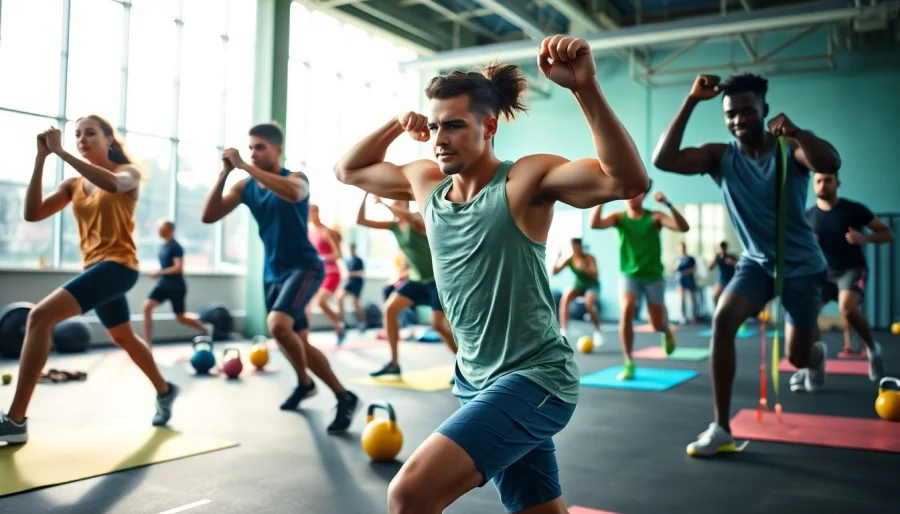In the world of athletic training and performance improvement, innovative techniques are continually emerging, and movenetics is at the forefront of this revolution. This holistic approach to training not only enhances physical capabilities but also addresses the mental aspects of performance, making it essential for athletes of all levels. Understanding movenetics and its benefits can be transformative, providing athletes with valuable tools to enhance their overall performance.
Understanding Moventics and Its Benefits
What is Moventics?
Moventics is a cutting-edge training methodology designed to optimize an athlete’s physical and mental readiness. Focusing on movement integration, it combines elements of flexibility, strength, and agility, engaging the body as a cohesive unit rather than isolated muscle groups. This practice emphasizes functional movement patterns, which are essential for sporting activities, thus paving the way for improved overall athletic performance.
Physical and Mental Advantages of Moventics
The benefits of movenetics extend beyond physical performance. Physiologically, it enhances cardiovascular endurance, muscle strength, and joint flexibility. Mentally, it fosters resilience, focus, and awareness, essential components for competitive athletes. Moventics encourages mindfulness in training, allowing athletes to connect with their bodies in real-time, leading to superior outcomes during competition.
How Moventics Enhances Flexibility and Strength
Flexibility and strength are cornerstones of athletic performance. Moventics offers targeted drills that include a variety of stretching techniques and strength-building exercises, promoting a balance that is seldom achieved through traditional training programs. This dual focus ensures that athletes can move freely and powerfully, minimizing the risk of injuries that often arise from muscular imbalances.
Key Moventics Techniques for Athletes
Essential Moventics Drills for Beginners
For those new to movenetics, starting with foundational drills is crucial. Simple activities such as dynamic stretching, bodyweight exercises, and coordination drills form the bedrock of effective training. For instance, incorporating movements like lunges with a twist or arm crossover stretches can help beginners understand body mechanics while preparing them for more advanced techniques.
Intermediate Moventics Techniques for Skill Development
As athletes progress, movenetics offers more complex techniques. Adding resistance training, like using resistance bands or bodyweight exercises involving plyometrics, lets athletes build on their strength. Incorporating these intermediate drills challenges coordination and control, vital for sports performance, and stimulates muscle growth and endurance.
Advanced Moventics Methods for Competitive Edge
Elite athletes can significantly benefit from advanced movenetics strategies that incorporate high-intensity interval training (HIIT) and core-centric workouts. Implementations such as kettlebell swings, Olympic lifts, or agility ladder drills can provide the competitive edge needed in challenging sporting environments, ensuring peak performance in crucial moments.
Implementing Moventics in Daily Training Routines
Creating a Moventics-Inspired Workout Plan
To successfully incorporate movenetics into everyday training, developing a structured workout plan is essential. This plan should include a mix of strength, flexibility, and agility drills suited to the athlete’s goals. A typical week may vary, emphasizing different aspects on different days while allowing for adequate rest and recovery. Such a balanced routine will help athletes maintain continuous improvement without falling into overtraining.
Integrating Moventics with Other Training Regimens
Integrating movenetics techniques with existing training methodologies can maximize effectiveness. For example, coupling movenetics with traditional strength training can create a more comprehensive workout. Athletes can focus on traditional weight lifting to boost strength while adding flexibility drills post-lifting to enhance mobility and recovery.
Tracking Progress with Moventics Techniques
Monitoring progress is vital for any training regimen. Athletes should assess their performance metrics, such as strength gains, flexibility improvements, and agility tests, regularly. Incorporating technology, such as fitness trackers and mobile apps, can provide valuable insights into training efficacy, helping to tweak routines as necessary to maintain momentum.
Common Challenges in Practicing Moventics
Overcoming Injuries with Moventics Strategies
Injuries are an unfortunate reality for athletes, but movenetics strategies can play a crucial role in prevention and rehabilitation. Understanding proper movement mechanics reduces the risk associated with training. Moreover, injury recovery can be enhanced through specialized stretches and low-impact movements, allowing athletes to safely return to their peak performance.
Motivation Techniques for Consistent Moventics Practice
Staying motivated in training can be challenging, particularly over long periods. Setting short and long-term goals can serve as a driving force for athletes practicing movenetics. Short-term achievements, like mastering a specific technique, can provide immediate gratification, while long-term goals can encourage sustained commitment to the training ethos.
Staying Focused During Training Sessions
Maintaining concentration during workouts is essential for effective training. Techniques such as mindfulness and visualization can enhance focus. Athletes should develop pre-training rituals that cultivate a mental state conducive to training, such as deep breathing or setting a clear intention for each session to ensure they remain engaged and purpose-driven.
Measuring Success with Moventics
Key Performance Indicators for Moventics
Measuring success in movenetics requires establishing clear performance indicators. These can include metrics such as improved flexibility scores, increased strength outputs, and enhanced coordination drills. Keeping a training log helps athletes track these indicators, allowing for informed adjustments to their training regimens based on their performance data.
Success Stories of Athletes Using Moventics
Numerous athletes have turned to movenetics and reported substantial successes. Accounts of improved competition results and personal bests highlight how effective this approach can empower athletes. Collecting and sharing these testimonials helps to create a sense of community among movenetics practitioners while providing inspiration for new users.
Evaluating Long-term Impact on Athletic Performance
The long-term benefits of incorporating movenetics into training are profound. Research suggests that athletes who adopt this methodology experience sustained improvements in performance metrics over time. Evaluating these long-term impacts on athletic performance through consistent training habits is crucial for understanding movenetics’ effectiveness and solidifying its place as a training staple for serious competitors.
